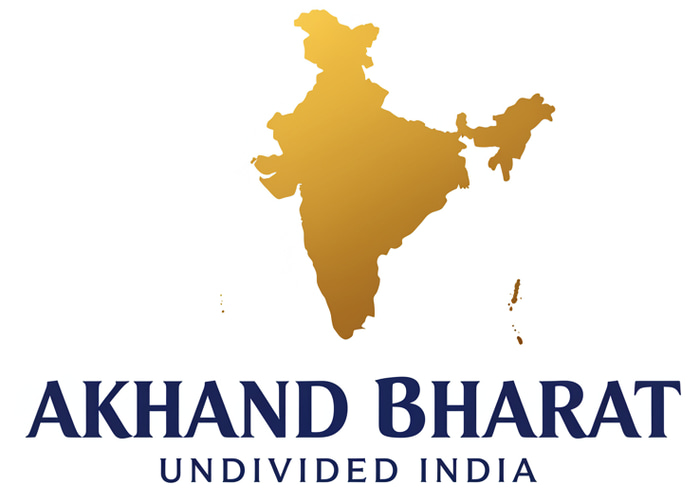Exploring the Concept of Akhand Bharat: A Vision for Unity
Akhand Bharat envisions a unified India, encompassing regions with shared cultural, spiritual, and historical ties. This blog delves into the significance of this concept, highlighting the deep-rooted connections among countries like Afghanistan, Bangladesh, and Nepal, and the importance of preserving our common heritage and values.
5/8/20243 min read


Exploring the Concept of Akhand Bharat: A Vision for Unity
The idea of Akhand Bharat, or Undivided India, is a concept deeply embedded in the cultural memory and spiritual fabric of South Asia. It envisions a unified Indian subcontinent — not as a political ambition or an imperial plan, but as a civilizational vision that acknowledges the shared roots, values, and traditions among modern-day countries such as Afghanistan, Bangladesh, Bhutan, India, Nepal, Pakistan, Sri Lanka, Maldives, Myanmar, and Tibet. In this blog, we explore the significance of this vision, the historical and spiritual ties that bind these nations, and the call to preserve and celebrate a common heritage that has shaped the identity of nearly two billion people.
What is Akhand Bharat?
Akhand Bharat (Sanskrit: अखंड भारत) translates to “Undivided India.” It refers to the cultural and spiritual unity that once existed across the Indian subcontinent before the partition of British India in 1947. However, the roots of Akhand Bharat stretch far beyond colonial history. The concept traces back to ancient India, when vast empires like the Maurya and Gupta dynasties governed large parts of South Asia under a shared ethos, promoting a flourishing of knowledge, spirituality, trade, and art.
A Civilizational, Not Political, Vision
At its core, Akhand Bharat is not about redrawing borders. Instead, it’s a vision for cultural unity, mutual respect, and spiritual kinship. It acknowledges that despite the existence of multiple sovereign states today, there is a continuity of traditions, values, and collective consciousness that transcends national boundaries. The concept promotes dialogue, peace, and cooperation rooted in shared heritage.
Historical and Spiritual Ties Across the Subcontinent
1. Afghanistan
Historically known as Gandhara and Kamboja in ancient Indian texts, regions of Afghanistan were integral to Indic civilization. It was a key center of Buddhist learning, with stupas, monasteries, and art (like the Bamiyan Buddhas) representing the blend of Indian and Hellenistic influences. Many Vedic and epic traditions reference these areas.
2. Bangladesh
Part of ancient Vanga and Pundra regions, Bangladesh shares deep linguistic, religious, and cultural ties with India. Bengali culture, which spans across the borders, is a reflection of shared literary, spiritual, and social heritage rooted in Sanskrit and Pali traditions.
3. Nepal
Nepal is often considered the spiritual sibling of India. It is the birthplace of Lord Buddha (Lumbini) and home to Pashupatinath, one of the holiest Shiva shrines. Vedic traditions, shared languages (like Sanskrit and Hindi), and festivals like Dashain and Tihar link Nepal closely with the Indian heartland.
4. Pakistan
The Indus Valley Civilization, considered the cradle of South Asian civilization, is largely located in modern-day Pakistan. The region of Punjab and Sindh has been the birthplace of Vedic hymns, Sufi poetry, and Bhakti movements. Ancient cities like Taxila were renowned centers of learning.
5. Tibet
Though geographically distinct, Tibet shares strong historical links through Buddhism, introduced from India by masters like Padmasambhava. Many Tibetan texts were translated from Sanskrit, and Tibetan Buddhism is deeply influenced by Indian philosophy.
6. Sri Lanka, Bhutan, Maldives, and Myanmar
These nations, although small in size, are vital components of the spiritual and cultural unity of the subcontinent. Sri Lanka and Myanmar are central to Theravāda Buddhism. Bhutan’s Vajrayana Buddhism finds roots in India’s Tantric traditions, while Maldives, once a center of Buddhist practice, also carries echoes of this ancient connection.
The Values That Unite Us
Beyond history and geography, the concept of Akhand Bharat is a call to remember the eternal values that have held this region together for millennia:
Vasudhaiva Kutumbakam – The world is one family
Ahimsa – Non-violence and compassion
Dharma – Righteousness, duty, and truth
Unity in Diversity – Respecting differences while recognizing commonality
These principles offer a moral compass not just for South Asia, but for the global community. They are reflected in the teachings of Buddha, Mahavira, Guru Nanak, and saints and philosophers from every corner of the region.
Akhand Bharat in Modern Times
Today, Akhand Bharat serves more as a cultural and spiritual aspiration than a political movement. In an age of fragmentation, nationalism, and global unrest, it encourages us to look beyond divisions and focus on the bonds that connect us:
Religious pilgrimages across borders (e.g., Kartarpur Corridor, Bodh Gaya visits)
Cross-border cultural festivals and film/music collaborations
Academic and historical research into shared civilizations
Economic partnerships within SAARC and BIMSTEC frameworks
These initiatives, while modest, show that the spirit of unity is still alive.
Preserving Our Common Heritage
Preserving the legacy of Akhand Bharat involves acknowledging historical truths, fostering people-to-people dialogue, and promoting inclusive education that highlights regional cooperation over division. It is essential to protect ancient monuments, promote multi-lingualism, and support interfaith harmony.
Conclusion: A Vision for a Peaceful Future
Akhand Bharat is not a call for political integration but a spiritual reminder that we are the inheritors of a common civilization. The concept invites South Asians to rise above conflicts and rediscover the unity in their diversity, guided by shared values and a commitment to collective peace and progress. In a world seeking meaning and connection, Akhand Bharat offers a timeless vision of oneness, rooted in wisdom, tolerance, and love.
